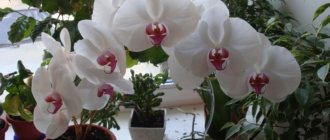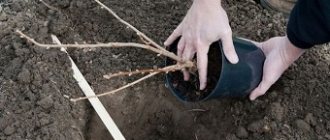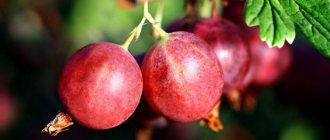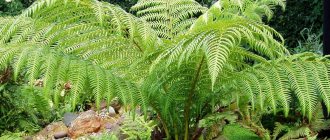For a long time, the flowering plant fragrant tobacco has been very popular among gardeners. And it deserves this because it has an original smell, and the colors of its flowers are very diverse. The aroma of such a plant can attract bees to the garden plot, and it also has a huge number of different varieties. This culture comes from South America. Thanks to Christopher Columbus, fragrant tobacco came to Europe. Under natural conditions, it is a perennial plant, but in mid-latitudes it is cultivated as an annual.
Types and varieties of fragrant tobacco
The plant has several types. They differ in the shades of the petals and the height of the main stems.
Dwarf varieties
The plants are small, reaching a height of up to 30 cm. They look impressive along paths, near benches, as house flowers, in flower beds. It goes well with petunias and is used by landscape designers in alpine gardens.
| Variety | Flowers | ||
| Havana Appleblossom | A plant with a variety of flowers in pink, lemon, scarlet, and yellow shades. | ||
| Nicky red | Grows lush. The coloring is distinguished by a rich palette from red to white. | ||
| Rosa Gnom | A low-growing variety, up to 25 cm with pale pink and bright red flowers. Looks great as a border. | ||
Medium-sized varieties
They grow up to 50 cm. They are used to form living fences; they are planted in flower beds, near the porches of houses, and along walls. Looks good with low-growing flowers.
| Variety | Flowers | ||
| Lime Green | It is grown as a perennial crop. The flowers have lemon, white, and beige shades of petals. | ||
| Green light | The plant has lush leaves, original light green color. | ||
| White Bedder | White flowers do not close during the day and have a rich aroma. | ||
| Italian F1 | It grows with large buds, green, white, and red shades predominate. | ||
| Purple Haze | There are many flowers, they open in the evening. The shade of the petals is in a lilac tone. | ||
| Fragrant Harbor | It stretches up to 60 cm. It has an excellent smell, flowers in white, blue, light blue shades. | ||
| Night fire | It is distinguished by bright red-raspberry large buds. | ||
Tall varieties
Flowers of this variety grow from 70 cm and above. Used to decorate columns, walls, and as hedges. They look beautiful when planted in groups near large trees. They are used in landscape design to form the background of compositions.
| Varieties | Flowers | ||
| Hypnosis | Pleasant, rich aroma. Flowers of a lilac hue predominate; sometimes there are green ones. | ||
| Aroma Green | The flowers are not stars, but bells, of a peculiar green color. | ||
| Lenevsky | Subtle shades of petals. The predominant colors are pink, white, and pistachio. Persistent, long-lasting aroma. | ||
| Evening | The variety has large white flowers. The buds open after sunset. The strong aroma lasts all night. | ||
| Record | It is distinguished by a variety of colors and an intense pleasant smell. | ||
| Mazhi noir | It has an exquisite aroma, pleasant small flowers of various colors. | ||
| Sensation | Grows up to 1 m. Flowers are brightly colored. The aroma is stronger in the morning. | ||
Description of the plant
Let's talk a little about the name of the fragrant plant. It is also called Decorative or Winged Tobacco . The Latin name for fragrant tobacco is very interesting - Nicotiana suaveolens , but there is also a second name in Latin - Nicotiana alata (that is, Winged Tobacco).
It cannot be smoked; it serves only a decorative and aesthetic function. It is often used to decorate gardens and landscape design, for example, to decorate alpine slides and rockeries. Gardeners who love aromatherapy will definitely like this flower crop.
By the way! The fragrance of a decorative flower begins in the evening and at night, and is also possible during the day, in cloudy weather.
The flowers have a diameter of about 6-8 centimeters. Among them there are different shades: white, yellow, light green, lilac, pink, red and others. With proper care of fragrant tobacco in open ground, flowering lasts from early summer to September.
By the way! Experienced flower growers have discovered an interesting pattern - the most fragrant and aromatic tobacco is the one that has white flowers or flowers of other light shades. But bright plants smell much weaker.
There are several types of fragrant tobacco:
- Low-growing (dwarf) - height up to 30 centimeters, ideal for decorating borders, rock gardens, rockeries, balconies.
- Medium-sized - from 30 to 70 centimeters; it is optimal to grow this variety around terraces and gazebos.
- Tall - the height of plants is from 80 centimeters, they look most interesting next to the walls of buildings, fences, behind flower beds that combine low and tall plants.
Do you know why else gardeners and flower growers love fragrant (winged) tobacco? It is a natural insecticide that repels pests from itself and from other crops in the garden - vegetables, berries, fruits. The flower is especially effective against Colorado potato beetles.
If you want to feel the whole palette of aromas of this amazing annual plant, then it is recommended to plant it in the garden in places where you often stay, for example, near a gazebo, hammock, bench, or entrance to the house.
Growing fragrant tobacco from seeds
It is more convenient to grow this ornamental plant from seeds. It can spread by self-sowing, but during snowless winters and cold weather in the spring, shoots may not sprout. This is a heat-loving flower, so it needs to be planted after the night frosts have stopped. Then you can be sure of survival.
Fragrant tobacco is a perennial plant in natural conditions, but in garden plots it is grown as an annual.
They begin to prepare seedlings in early March. You need flat containers and soil. Garden soil is suitable for the soil; you can add humus and peat. The seed of the plant is small, you need to carefully distribute it over the surface. For more uniform sowing, experienced gardeners advise mixing grains with fine sand, carefully sprinkle with soil, and spray with a spray bottle. Take warm, settled water.
Some gardeners recommend watering unhatched seedlings with a dessert spoon. The pressure of the jet from the spray bottle nails the sprouts to the ground, because of this they will not appear for a long time.
Caring for fragrant tobacco seedlings
To obtain strong and healthy plants, planting and care must be carried out according to the following rules:
- The optimal temperature for seedlings is within +18…+22 °C.
- After sowing the seeds in the container, specially create a greenhouse effect. To do this, place glass on top or cover with film.
- Open the greenhouse slightly for ventilation for a few minutes every day.
- When the soil dries out, spray it with a sprayer. The soil should always be moist, but without stagnant moisture.
In one and a half to two weeks the first shoots will appear. They will be small. To prevent the seedlings from growing too tall, they should be illuminated during the daytime. The film or glass is removed. The temperature is reduced to +16°C, containers with seedlings are placed under bright but diffused light.
As soon as the sprouts have two true leaves, they are distributed into separate containers or thinned out, leaving a distance of 3-4 cm. When transplanting, the root with an earthen lump is captured. This will allow the seedling to quickly adapt to a new location. To form a more lush plant, after 5-6 leaves appear, pinch the top.
Preparation and storage
Raw materials are collected from late summer to mid-autumn. Leaves are picked from the tops of bushes that receive maximum light. The lower layers are removed as they grow.
Drying
This process consists of two stages: languor and fixation . In the first case, tobacco leaves are kept at a temperature of about +25 °C, when they still retain vital activity. During fixation, moisture is directly removed from the leaves.
To dry, tobacco is strung on a rope and placed in dryers. These are large rectangular shaped barns located close to the plantations. There the leaves are tied in pairs and hung on poles. As the plants dry out, these poles are placed closer to the ceiling, and fresh leaves are hung from below. Depending on the variety, the procedure takes from 25 days to 1.5 months. How it looks, look at the photo.
Fermentation
Fermentation is a chemical reaction that converts organic substances into inorganic substances.
Primary fermentation is carried out for all types of tobacco. To do this, the leaves are stacked (as they are called, “pylons”) or sent to barrels under a press. In this form, tobacco is stored in a dark, closed room for about a month.
After fermentation, the leaves are sorted, quality is identified and distributed for the production of cigars and regular cigarettes. The raw materials for the cigars are sent for aging, and the rest is sent for a second fermentation. The whole process takes from 6 months to 3 years.
Planting fragrant tobacco in open ground
Only after the final warmth has been established can grown seedlings be planted in open ground. The earth is warming up well, and frosts no longer return at night. Each region has its own period. Approximately the end of May for central Russia. Two weeks before transplanting into the ground, seedlings begin to accustom themselves to fresh air. To do this, they are taken outside every day.
The duration of this kind of hardening starts from 1 hour and reaches up to a day.
You need to carefully choose a place to plant fragrant tobacco. It should not be exposed to direct sunlight or strong gusts of wind. Tall stems break quickly and the bushes will look unkempt. The composition of the soil does not matter much, but humidity and fertility will affect growth and flowering.
Bushes should be planted at a distance of 20 cm from each other. For tall varieties, the distance can be increased. They grow large, require a lot of space, first stretch out in height, then begin to spread along the bottom.
Superphosphate is added to each well. Carefully transport the seedling, add soil, water it well, and arrange the beds.
Fragrant tobacco planting and care
Temperature conditions . Medium-warm content at 18 - 27 ° C. This subtropical plant does not tolerate cold, the minimum permissible temperature during the winter dormant period is 10 ° C.
Growing fragrant tobacco - lighting . Fragrant tobacco is a long-day plant and flowering occurs only in good light for at least 14 hours a day. Sunny window, light-filled balcony. Provide the tobacco with at least 4 hours of direct sunlight every day. Blooms reluctantly in the shade.
Care . To extend flowering time, fading flowers are regularly pinched. Provide this tropical evergreen with warmth, humidity and plenty of sunlight, as well as support for its slender stems. When kept outside during warm periods, the plant produces more flowers. Return the plant to a warm room when the night temperature drops below 10°C. Tobacco needs a winter rest when growth stops during the winter. Stop fertilizing and water sparingly in winter, but never allow the soil to dry out completely.
Substrate . The soil should easily allow moisture and air to pass to the roots of the plant. Sod and leaf humus, peat and coarse sand.
Fragrant tobacco in a pot - feeding . Every 2 weeks from spring to autumn with liquid fertilizer with a high phosphorus content diluted by half.
Purpose . A very impressive ornamental flowering plant with a pleasant aroma, the plants look great in flower pots.
Flowering time . Flowering is abundant and long lasting throughout the summer.
Air humidity . Moderate to high (50% or higher). Place the pot on a tray of damp gravel or use a humidifier to increase the humidity around the plant if the indoor air becomes too dry.
Soil moisture . Water abundantly during the growing season; before each subsequent watering, dry the substrate to a depth of about 2 cm. When the summer heat sets in, tobacco leaves often droop and watering should be increased. Reduce watering in winter when growth has slowed.
Transplant . Annual species do not need to be replanted, as the plants are thrown away after flowering. Replant perennial tobacco annually in spring into a larger pot. Use pots with large drainage holes to prevent water from pooling at the root system.
Reproduction, fragrant tobacco from seeds . Easily propagated by seeds sown in spring. The seeds are slightly pressed into the surface of the soil, without covering them with soil on top. At an air temperature of about 20 ° C, germination will occur within 2 - 3 weeks.
Pests and diseases . Spider mite. Keep the air humidity high enough to avoid these pests. Aphid.
Note : All parts of the plant are poisonous. Keep it away from children and pets, and use protective gloves when handling tobacco.
Hydroponics .
You might also be interested in:
Olya
Living deliciously is a whole science!
Caring for fragrant tobacco
It is not difficult to grow fragrant tobacco in your garden. It is able to grow in any conditions and easily adapts. To obtain beautiful greenery, a lasting scent and long-lasting flowering, you need proper care.
Watering
This is a moisture-loving plant; greens consume a lot of water. For lush flowering (especially in hot weather) you need high-quality watering. The soil should always be moist.
The best time for this is morning and evening hours.
Lighting
The fragrant flower is unpretentious and does not require special conditions. The plant will get used to shade from spreading trees and bright sunlight. Landscape designers love it for its unpretentiousness. But tobacco grows poorly in deep shade. Flowerpots are moved during the growth stage to form an even and beautiful bush.
https://www.youtube.com/watch?v=djXqeG9tpJk
The soil
The composition of the soil is not important for the plant; for seedlings you can simply take garden soil. Fertility and the presence of drainage contribute to good development. To form a large number of buds, it is necessary to regularly loosen the soil, use organic mulch, and add it throughout the season.
Top dressing
Fertilizers are applied twice per season: when buds appear and at the beginning of flowering. Fertilizing is not necessary if the soil is fertile. For depleted soil, mineral complex fertilizers with a low nitrogen content are suitable. Because of it, foliage will grow rapidly, but flowering will be poor. Fertilizers are mixed with water for irrigation.
Trimming
Inflorescences that have bloomed do not interfere with the formation of new buds. But the plant looks sloppy and neglected. Flowering continues continuously, so there may be a lot of wilted buds. It is better to collect them so that their decorative appeal remains at a high level.
Diseases and pests
Fragrant tobacco contains a large amount of phytoncides in its greenery, so the plant is resistant to being eaten by pests and affected by diseases. It protects other plantings that are nearby.
In rare cases, flowers are affected by downy mildew. A yellow coating with a green tint forms on the leaves. They dry out and the edges curl. To combat the disease, it is recommended to remove and burn the affected bushes. Spray the ground under them with a formaldehyde solution (7.5%). For 1 sq. m. 30 liters are consumed. The instruments that were used must also be treated with formaldehyde (3%). Sprinkle nearby plants with Zineba (80%).
Pests and diseases
Diseases and their treatment
Tobacco can develop fungal diseases such as black root rot, dry root rot, blackleg (seedling rot), powdery mildew, downy mildew (downy mildew), and dry white spot (alternaria). Tobacco is also affected by bacterial grouse and viral diseases - tobacco, or ordinary mosaic, cucumber mosaic, bronzing (apical chlorosis) and white mosaic.
Disease control measures. As for viral infections, it is useless to fight them: you just need to remove and burn the diseased plants. Fifty percent wettable Benlat powder is used against root rot. And against bacterial grouse, peronospora, powdery mildew and other fungal diseases, preventive spraying of seedlings with a suspension of Zineb or Polycarbacin is effective. In general, the most reliable protection is preventive treatment of soil and seeds before sowing. For fungal and bacterial diseases, tobacco seeds are treated for 15 minutes with a solution of Formalin: 20 cm³ of forty percent Formalin is dissolved in 1 liter of water. Two liters of this solution are consumed per 1 kg of seeds. The soil is also shed with Formalin solution.
In the photo: Growing smoking tobacco on the site
Pests and their control
Among the pests that pose a threat to tobacco are peach aphids, tobacco thrips and wireworms.
- What to plant next to gladioli
The peach aphid, which produces up to 18 generations per season, sucks the juice from tobacco leaves and leaves their excrement, skins after molting and corpses in them. In addition, it is a carrier of such dangerous incurable diseases as white moth and cucumber mosaic. Aphids deplete the plant, slow down its development, reduce productivity and worsen the taste of tobacco. The fight against aphids is carried out with the drugs Rogor and Metathion, and for preventive purposes, regular and thorough weeding of the beds and daily inspection of tobacco leaves are very important.
Tobacco thrips is a pest as small as aphids, producing up to 7 generations over the summer. Thrips bites through tobacco leaves and sucks out the juice from them, as a result of which the quality of raw materials and the yield of tobacco sharply decrease: the affected leaves ferment poorly, dry unevenly and become brittle after drying. In addition, thrips, like aphids, transmit viral diseases. Tobacco infected with thrips should be treated with insecticides.
Wireworms, or drupes, are the hard, yellow-brown larvae of click beetles. They live in the ground, damage roots, make passages in the stems of young plants and eat away the core. They are very difficult to fight, so you need to try to prevent them from appearing in the soil. If you find wireworms in the area, then two weeks before planting tobacco, treat the soil for digging with twelve percent Hexachloran dust, and the next day in the evening, pollinate the soil with Metaphos dust and fence the area to a depth of 3-4 cm.
Fragrant tobacco after flowering
In the fall, after the sweet peas have faded, you need to select a few of the strongest, most beautiful bushes. Dig them out of the ground and place them in pre-prepared pots. Shorten the stems by a third. Bring it into the house, place it in a well-lit place (on a windowsill on the east or south side) and leave it for the winter, storing until spring.
It is necessary to monitor the condition of the soil. It should not be dry, as the plants may die. Water as needed, but without waterlogging. When the ground warms up in the spring, there is no chance of a return of nighttime temperature drops, the bushes are transplanted into open ground. This method of propagation can be used to grow flowers for several years.
Mr. Summer Resident recommends: fragrant tobacco - a fungicide in the garden
Fragrant tobacco is a beautiful and useful plant for a summer cottage. The aroma attracts bees, which is important for insect-pollinated crops.
The plant also successfully defeats the Colorado potato beetle. Tobacco and potatoes belong to the nightshade family. The dangerous insect moves onto the fragrant flower, but the phytoncides in its leaves are poisonous. Pests die after eating the greens.
To get rid of Colorado potato beetles, experts advise planting fragrant tobacco around the perimeter of the plot a few days before potatoes. The flower is not addictive to pests, like chemical poisons. Annual joint plantings for three years will help get rid of dangerous insects.
Fragrant tobacco is one of the unusual fragrant flowers that create a unique garden atmosphere. Combines well with other plantings. They delight you with their appearance all summer long and do not require complex care.
Composition and properties
Tobacco leaves are a real chemical factory. The composition largely depends on the variety, method of drying and fermentation, but on average the plant contains about 2,500 different substances and compounds.
Despite the fact that tobacco is considered extremely harmful and dangerous to health, some substances in its composition are extremely valuable. For example, nicotinic acid is actively used in industry, in particular medical.
Chemical composition
The most active components of tobacco leaves include alkaloids:
- nicotine;
- nornicotine;
- cotinine;
- myosmin;
- anabasine;
- nicotirine;
- anatabine;
- 2,3-dipyridyl;
- amino acids;
- carbohydrates;
- sterols;
- phenolic compounds.
The processed leaves have different compositions. Depending on the variety, quantity and method of fermentation, the volume of substances in the leaves varies: nicotine - from 1 to 4%; carbohydrates - from 1 to 13%; essential oils - from 0.1 to 1.7%; organic acids - from 5 to 17%.
Benefits and harm to the body
Tobacco is valuable in medicine because it serves as a source of nicotinic acid. This substance performs a number of functions in the body:
- participates in metabolism, stimulating the process of energy production;
- regulates blood cholesterol levels;
- participates in the synthesis of hormones necessary for the body (serotonin, somatotropin);
- improves memory and sleep, the general condition of the nervous system;
- supports the functioning of the heart and blood vessels during coronary artery disease and in the first stages of atherosclerosis;
- cleanses the body, which is why it is often used for intoxication;
- restores and improves digestion.
Despite its positive qualities, tobacco also brings considerable harm. Polonium-210 accumulates in the plant, which passes from fertilizers into the leaves of the plant. This is one of the reasons for the development of bronchial cancer in smokers. It is impossible to remove the substance from the plant.
Attention! Substances such as resins, benzene and formaldehyde are extremely dangerous. They provoke the development of oncology, affect the lungs and respiratory tract, and negatively affect the digestive and circulatory systems.











